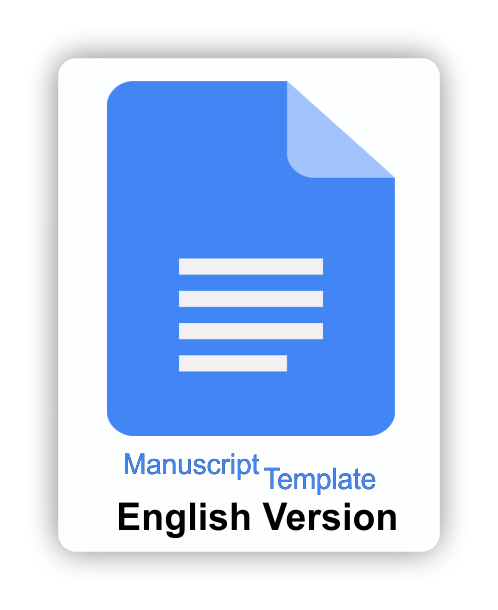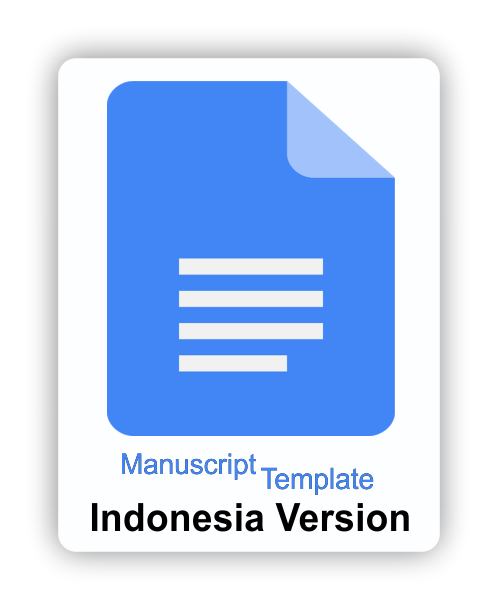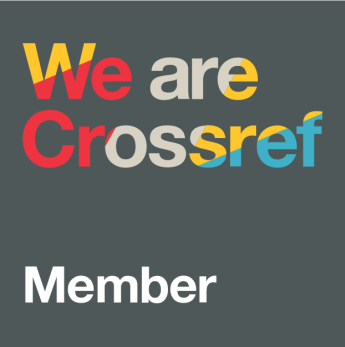Bridging the gap: Student perceptions of blended learning's promise and reality in higher education
Downloads
This study investigates students’ perceptions of their learning experiences in a blended learning environment. It seeks to describe: 1) students’ perceived learning effectiveness in blended learning, 2) key aspects of blended learning contributing to learning effectiveness, and 3) problems and constraints in blended learning. A cross-sectional survey design was employed, targeting undergraduate students from six departments and three different semester cohorts who had experienced blended learning. With a population of approximately 6.000 students, a sample of 509 students was selected using stratified random sampling to ensure proportional representation across departments and cohorts. Data were collected through a structured questionnaire and analyzed using descriptive statistics. Results indicate that while 60% of students strongly valued the flexibility to access materials anytime/anywhere, fewer than 40% reported effective self-paced learning or study planning. Interaction and collaboration were limited (25–38% agreement), and perceived impacts on motivation (27–35%) and material understanding (26–27%) were modest. Technical ability varied, with only 24% feeling highly competent in platform feature usage. Overall satisfaction was low (29%), aligning with suboptimal active engagement, interaction/collaboration, and perceived impacts. Findings suggest that blended learning implementation at this institution did not fully realize its potential for autonomy, collaboration, or enriched outcomes, highlighting the need for improved pedagogical design, user-friendly technology, and strategies to foster critical dialogue and self-regulation.
Akyol, Z., Garrison, D. R., & Ozden, M. Y. (2009). Online and blended communities of inquiry: Exploring the developmental and perceptional differences. The International Review of Research in Open and Distributed Learning, 10(6), 65-83. https://doi.org/https://doi.org/10.19173/irrodl.v10i6.765
Anthony, B., Kamaludin, A., Romli, A., Raffei, A. F. M., Nincarean A/L Eh Phon, D., Abdullah, A., Ming, G. L., Shukor, N. A., Nordin, M. S., & Baba, S. (2019). Exploring the role of blended learning for teaching and learning effectiveness in institutions of higher learning: An empirical investigation. Education and Information Technologies, 24, 3433-3466. https://doi.org/10.1007/s10639-019-09941-z
Anthony, B., Kamaludin, A., Romli, A., Raffei, A. F. M., Phon, D. N. A. E., Abdullah, A., & Ming, G. L. (2022). Blended learning adoption and implementation in higher education: A theoretical and systematic review. Technology, Knowledge and Learning, 27, 531-578.
https://doi.org/10.1007/s10758-020-09477-z
Arabasz, P., & Baker, M. B. (2003). Evolving campus support models for e-learning courses. ECAR Respondent Summary
Asmawi, M. R. (2005). Strategi meningkatkan lulusan bermutu di perguruan tinggi. Makara Human Behavior Studies in Asia, 9(2), 66-71. https://doi.org/https://doi.org/10.7454/mssh.v9i2.124
Balakrishnan, A., Puthean, S., Satheesh, G., MK, U., Rashid, M., Nair, S., & Thunga, G. (2021). Effectiveness of blended learning in pharmacy education: A systematic review and meta-analysis. PloS one, 16(6), 1-17. https://doi.org/10.1371/journal.pone.0252461
Birbal, R., Ramdass, M., & Harripaul, M. C. (2018). Student teachers’ attitudes towards blended learning. Journal of Education and Human Development, 7(2), 9-26. https://doi.org/10.15640/jehd.v7n2a2
Bonk, C. J., Kim, K.-J., & Zeng, T. (2005). Future directions of blended learning in higher education and workplace learning settings. In P. Kommers & G. Richards (Eds.), Proceedings of ED-MEDIA 2005--World Conference on Educational Multimedia, Hypermedia & Telecommunications (pp. 3644-3649). https://publicationshare.com/c39-Bonk,-Kim,-and-Zeng-on-Future-Directions-Bonk,-Kim,-and-Zeng-updated.pdf
Bouilheres, F., Le, L. T. V. H., McDonald, S., Nkhoma, C., & Jandug-Montera, L. (2020). Defining student learning experience through blended learning. Education and Information Technologies, 25(4), 3049-3069. https://doi.org/10.1007/s10639-020-10100-y
Bowyer, J., & Chambers, L. (2017). Evaluating blended learning: Bringing the elements together. Research Matters: A Cambridge Assessment Publication, 23(1), 17-26. https://doi.org/10.17863/CAM.100355
Broadbent, J., & Fuller-Tyszkiewicz, M. (2018). Profiles in self-regulated learning and their correlates for online and blended learning students. Educational technology research and development, 66, 1435-1455. https://doi.org/https://doi.org/10.1007/s11423-018-9595-9
Caner, M. (2012). The definition of blended learning in higher education. In P. S. Anastasiades (Ed.), Blended learning environments for adults: Evaluations and frameworks (pp. 19-34). IGI Global. https://doi.org/10.4018/978-1-4666-0939-6.ch002
Chen, J. (2022). Effectiveness of blended learning to develop learner autonomy in a Chinese university translation course. Education and Information Technologies, 27, 12337-12361. https://doi.org/10.1007/s10639-022-11125-1
Creswell, J. W. (2008). Educational research: Planning, conducting, and evaluating quantitative and qualitative research (3rd ed.). Pearson Education, Inc.
Fleck, J. (2012). Blended learning and learning communities: opportunities and challenges. Journal of Management Development, 31(4), 398-411. https://doi.org/10.1108/02621711211219059
Freeman, R., & Johanson, K. (2006). A case for blended and collaborative learning as strategies for teaching editing and publishing within a postgraduate writing program. Tertiary Writing Network Colloquium, Napier, New Zealand.
Garrison, D. R., & Kanuka, H. (2004). Blended learning: Uncovering its transformative potential in higher education. The Internet and Higher Education, 7(2), 95-105. https://doi.org/https://doi.org/10.1016/j.iheduc.2004.02.001
Garrison, D. R., & Vaughan, N. D. (2011). Blended learning in higher education: Framework, principles, and guidelines. Wiley. https://books.google.co.id/books?id=UhYnZbYhDl0C
Gil, P. O., & García, F. A. (2011). Blended learning revisited: How it brought engagement and interaction into and beyond the classroom. In Blended Learning across Disciplines: Models for Implementation (pp. 58-72). IGI Global. https://doi.org/10.4018/978-1-4666-0011-9.ch104
Gravetter, F., & Wallnau, L. (2007). Essentials of statistics for the behavioral science. Cengage Learning. https://books.google.co.id/books?id=hcoYNW4BujYC
Guppy, N., Verpoorten, D., Boud, D., Lin, L., Tai, J., & Bartolic, S. (2022). The post-COVID-19 future of digital learning in higher education: Views from educators, students, and other professionals in six countries. British journal of educational technology, 53(6), 1750-1765. https://doi.org/10.1111/bjet.13212
Han, F., & Ellis, R. A. (2021). Patterns of student collaborative learning in blended course designs based on their learning orientations: A student approaches to learning perspective. International Journal of Educational Technology in Higher Education, 18(66), 1-16. https://doi.org/10.1186/s41239-021-00303-9
Hoadley, E. D. (2009). Teaching a hybrid MBA course: A case study in information technology from the student perspective. American Journal of Business Education, 2(6), 61-68. https://files.eric.ed.gov/fulltext/EJ1052664.pdf
Hoic-Bozic, N., Mornar, V., & Boticki, I. (2008). A blended learning approach to course design and implementation. IEEE transactions on education, 52(1), 19-30. https://doi.org/10.1109/TE.2007.914945
Howitt, C., & Pegrum, M. (2015). Implementing a flipped classroom approach in postgraduate education: An unexpected journey into pedagogical redesign. Australasian Journal of Educational Technology, 31(4), 458-469. https://doi.org/https://doi.org/10.14742/ajet.2439
Hudson, B. (2002). Critical dialogue online: Personas, covenants, and candlepower. In K. E. Rudestam & J. Schoenholtz-Read (Eds.), Handbook of online learning: Innovations in higher education and corporate training (pp. 53–90). Sage.
Islam, M. K., Sarker, M. F. H., & Islam, M. S. (2022). Promoting student-centred blended learning in higher education: A model. E-Learning and Digital Media, 19(1), 36-54. https://doi.org/10.1177/20427530211027721
Jaswal, P., & Behera, B. (2024). Blended matters: Nurturing critical thinking. E-Learning and Digital Media, 21(2), 106-124. https://doi.org/10.1177/20427530231156184
Joy, E. H., & Garcia, F. E. (2000). Measuring learning effectiveness: A new look at no-significant-difference findings. Journal of Asynchronous Learning Networks, 4(1), 33-39. https://doi.org/10.24059/olj.v4i1.1909
Kaur, M. (2013). Blended learning - its challenges and future. Procedia - Social and Behavioral Sciences, 93, 612-617. https://doi.org/10.1016/j.sbspro.2013.09.248
Kintu, M. J., & Zhu, C. (2016). Student characteristics and learning outcomes in a blended learning environment intervention in a Ugandan University. IJEL: Electronic journal of e-Learning, 14(3), 181‑195. https://academic-publishing.org/index.php/ejel/article/view/1754/1717
Lam, J. (2015). Collaborative learning using social media tools in a blended learning course. In: Cheung, S., Kwok, Lf., Yang, H., Fong, J., Kwan, R. (eds) Hybrid Learning: Innovation in Educational Practices. ICHL 2015. Lecture Notes in Computer Science, 9167, (pp. 187-198) Springer, Cham. https://doi.org/10.1007/978-3-319-20621-9_15
Lim, C. P., Wang, T., & Graham, C. (2019). Driving, sustaining and scaling up blended learning practices in higher education institutions: A proposed framework. Innovation and Education, 1(1), 1-12. https://doi.org/10.1186/s42862-019-0002-0
Mitchell, P., & Forer, P. (2010). Blended learning: The perceptions of first-year geography students. Journal of Geography in Higher Education, 34(1), 77-89. https://doi.org/10.1080/03098260902982484
Ocak, M. A. (2011). Why are faculty members not teaching blended courses? Insights from faculty members. Computers & Education, 56(3), 689-699. https://doi.org/10.1016/j.compedu.2010.10.011
Picciano, A. (2009). Blending with purpose: The multimodal model. Journal of the Research Center for Educational Technology, 13(1), 7-18. https://doi.org/10.24059/olj.v13i1.1673
Shaqour, A. Z. (2014). Faculty members’ views towards blended learning, the case of a Najah National University Master Program Teachers in the College of Education and Teacher Preparation. International Journal of Humanities and Social Science, 4(7), 99-106. https://www.ijhssnet.com/journals/Vol_4_No_7_May_2014/14.pdf
Sharma, D., Sood, A. K., Darius, P. S., Gundabattini, E., Darius Gnanaraj, S., & Joseph Jeyapaul, A. (2022). A study on the online-offline and blended learning methods. Journal of The Institution of Engineers (India): Series B, 103, 1373-1382. https://doi.org/10.1007/s40031-022-00766-y
Straits Research. (2024). Blended learning market trends, growth, and forecast 2024–2032: Global insights. https://straitsresearch.com/report/blended-learning-market/
Tonbuloğlu, B., & Tonbuloğlu, İ. (2023). Trends and patterns in blended learning research (1965–2022). Education and Information Technologies, 28, 13987-14018. https://doi.org/10.1007/s10639-023-11754-0
Ustun, A. B., Ke, Z., Yilmaz, F. G. K., & Yilmaz, R. (2023). Learning analytics based feedback and recommendations in flipped classrooms: An experimental study in higher education. Journal of Research on Technology in Education, 55(5), 841-857. https://doi.org/10.1080/15391523.2022.2040401
Vo, H. M., Zhu, C., & Diep, N. A. (2017). The effect of blended learning on student performance at course-level in higher education: A meta-analysis. Studies in Educational Evaluation, 53, 17-28. https://doi.org/10.1016/j.stueduc.2017.01.002
Vo, M. H., Zhu, C., & Diep, A. N. (2020). Students’ performance in blended learning: Disciplinary difference and instructional design factors. Journal of Computers in Education, 7, 487-510. https://doi.org/10.1007/s40692-020-00164-7
Waqqar, S., Qaiser, A., & Noor, A. A. (2020). Impact of blended learning environment on self-directed learning skill development among post graduates of health professions education. Medical Forum Monthly, 13(10), 189-193. https://medicalforummonthly.com/index.php/mfm/article/view/2573/2234
Yang, S. H. (2016). Conceptualizing effective feedback practice through an online community of inquiry. Computers & Education, 94, 162-177. https://doi.org/https://doi.org/10.1016/j.compedu.2015.10.023
Yu, Q., Yu, K., Li, B., & Wang, Q. (2025). Effectiveness of blended learning on students’ learning performance: A meta-analysis. Journal of Research on Technology in Education, 57(3), 499-520. https://doi.org/10.1080/15391523.2023.2264984
Copyright (c) 2025 Abdul Rahman, Syamsuardi Syamsuardi, Syamsurijal Basri

This work is licensed under a Creative Commons Attribution-ShareAlike 4.0 International License.
The journal allows the author(s) to hold the copyright without restrictions. Finally, the journal allows the author(s) to retain publishing rights without restrictions
 | Jurnal Inovasi Teknologi Pendidikan by http://journal.uny.ac.id/index.php/jitp is licensed under a Creative Commons Attribution-ShareAlike 4.0 International License. |























